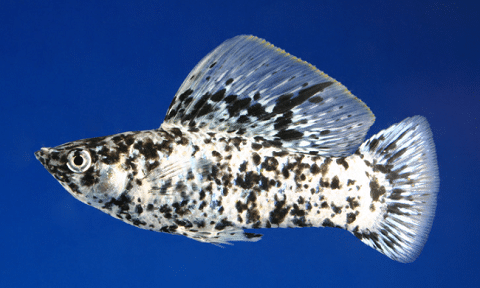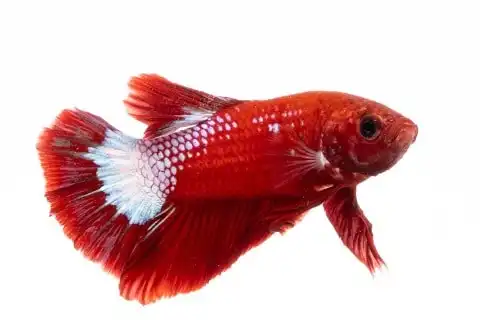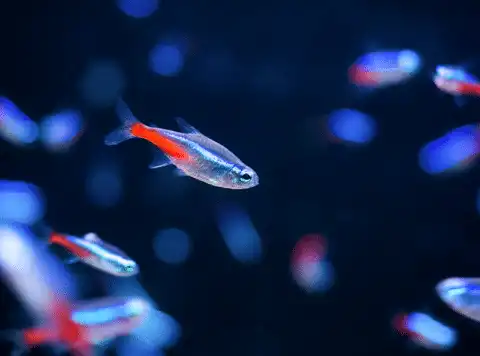Thank you for visiting! By the way… any links on this page that lead to products on Amazon and other stores/partners are affiliate links Aquarium Store Depot earns a commission if you make a purchase.
Are you looking for an affordable pet fish to add to your aquarium? Getting started in the aquarium hobby doesn’t have to cost a small fortune, so in this article, I’ll be covering 10 cheapest pet fish that you can keep without breaking the bank.
Let’s dive right in!
Key Takeaways
- Inexpensive fish are ideal for beginners and young fish keepers.
- Avoid sick fish that might not survive. Only buy from well-maintained pet stores and trusted online retailers.
- Most fish need to be kept in schools. Remember to factor this into your budget.
- When it comes to equipment, avoid low-quality products. It is better to buy smart and avoid unnecessary items.
Cheap Vs Expensive Fish – What’s the Difference?
Have you ever wondered why some fish cost more than others? There are a few good reasons for the different price tags, and they can also tell you something about the fish before you buy them. We have a video above from our YouTube Channel that helps illustrate and our blog post goes into more detail. Follow along with both to get the full detail.
Expensive fish tend to be rare and difficult to breed. Often they have to be caught in the wild, which certainly adds to the price when you factor in transport and other costs. Rare and expensive fish can also be difficult to care for.
Cheap fish are generally simple to breed and easy to care for, so they tend to be the most readily available.
The most common and well-known fish are popular for a reason, of course. They may not provide much of a challenge to experienced aquarists, but they make wonderful pets and great display animals in home aquariums.
Cheapest Pet Fish – 10 Great Options
Are you ready to learn about ten great fish breeds that won’t cost a fortune? These freshwater fish are great for beginners, but more experienced aquarists will also appreciate their great looks and fascinating behaviors.
Let’s get started!
1. Guppy
An undemanding fish that is a livebearer. Many varieties available
- Scientific name: Poecilia reticulata
- Care level: Easy
- Tank size: 10 gallons +
- Fish size: 1 – 2.5 inches
- Minimum school size: Trio
- Temperature: 63 – 82°F
- pH: 7 – 8.5
- Community tank suitability: High
Guppies are the ultimate cheap fish, often going for just a few dollars. These fish are so affordable because they are super easy to breed. However, there are loads of fancy guppy breeds out there and some of them can be surprisingly pricey.
Pick up a trio of standard guppies if you want a group of colorful and hardy fish that are easy to keep and care for. Guppies thrive in tanks as small as 10 gallons because of their small size.
2. Common Goldfish

- Scientific name: Carassius auratus
- Care level: Easy
- Tank size: 30 gallons +
- Fish size: 6 inches
- School size: 1 +
- Temperature: 68 – 74°F
- pH: 6.8 – 7.2
- Community tank suitability: Possible. Eats Plants
The common goldfish is another classic aquarium fish that can be bought for really low prices. These beautiful fish come in loads of different breeds, but commons, comets, and fantails tend to be the cheapest options.
Goldfish are awesome pet fish and they were first bred in ponds in ancient China. However, goldfish are more than just pond fish. They thrive in home aquariums with good filtration. These fish can grow to over 6 inches though, so steer clear of bowls and small tanks.
One of the benefits of keeping these cool water fish is that they don’t need a heater in most homes. This can save your electricity bill a little in the long run.
3. Zebra Danio

- Scientific name: Danio rerio
- Care level: Easy
- Tank size: 15 gallons +
- Fish size: 1.75 inches
- School size: 8 +
- Temperature: 64 – 74°F
- pH: 6 – 8
- Community tank suitability: High
Zebra danios are some of the cheapest freshwater fish in the aquarium hobby. That doesn’t mean they aren’t great pets, of course! These active little fish bring any community freshwater aquarium to life with their speed and grace.
Zebra danios are really hardy, too, so they’re the perfect choice for beginners or young fishkeepers just starting out. You’ll need to pick up a school of at least 8 of these low-maintenance fish to see them at their best.
4. Molly

- Scientific name: Poecilia sphenops / P. latipinna
- Care level: Easy
- Tank size: 30 gallons
- Fish size: 4 – 6 inches
- School size: 4 +
- Temperature: 68 – 82°F
- pH: 7 – 8
- Community tank suitability: High
Molly fish are another inexpensive tropical fish that offer great value for money. These hardy livebearers are so versatile that you can even keep them as saltwater fish with other marine fish species.
Mollies can reach about 6 inches, so they need a larger aquarium of at least thirty gallons. These fish eat a variety of food sources, but they also love to feed on algae which means they can help to keep your tank clean.
5. Platy

- Scientific name: Xiphophorus maculatus
- Care level: Easy
- Tank size: 10 gallons +
- Fish size: 2 inches
- School size: 5 +
- Temperature: 70 – 80°F
- pH: 7 – 8.5
- Community tank suitability: High
Platy fish are low-cost live-bearing fish from the same family as guppies and molly fish. They come in many varieties, including yellow, blue, and multicolored types.
Platies are small fish, so you can keep them in a small fish tank with very inexpensive equipment. They also get along perfectly with many freshwater species, including many of the other fish on this list!
6. Betta
Use Coupon Code ASDFISH at Checkout
Betta Fish are one of the most beautiful varieties of freshwater fish available in the hobby. Easy to care for with plenty of varieties!
- Scientific name: Betta splendens
- Care level: Easy
- Tank size: 5 gallons +
- Fish size: 2.5 inches
- School size: 1
- Temperature: 75 – 80°F
- pH: 6.5 – 8
- Community tank suitability: Possible
Betta fish are the first choice for fish keepers who want a single, low-maintenance fish that doesn’t need a large aquarium. These freshwater species come in all the vibrant colors of the rainbow, from yellow to blue and everything in between! Not only can they be cheap but also very expensive, depending on the species you want.
Betta fish also come in many different fin shapes like half moon, crown tail, and elephant ear. The female fish are a little smaller and less colorful, but they make great pets too.
Sadly, betta fish are often sold in cups and kept in small bowls and other tiny containers. These fish will not survive for long in such an unhealthy environment; set your pet up with a 5-gallon (or larger) aquarium with a heater and a filtration system.
7. Neon Tetra
Use Promo Code ASDFLIPPROMO
One of the most popular freshwater community schooling fish available in the aquarium trade. Great neon blue colors!
- Scientific name: Paracheirodon innesi
- Care level: Easy
- Tank size: 15 gallons +
- Fish size: 1.5 inches
- School size: 6 +
- Temperature: 70 – 77°F
- pH: 6 – 7
- Community tank suitability: High
Neon tetras are amazing fish for any home aquarium. A neon tetra school will usually cost just a couple of dollars but the movement and color they can provide in your aquarium are priceless!
These tiny fish get along with many other peaceful freshwater fish too, so you can keep them with other inexpensive schooling fish.
8. Swordtails
- Scientific name: Xiphophorus helleri
- Care level: Easy
- Tank size: 20 gallons +
- Fish size: 4 inches
- School size: 5 +
- Temperature: 64 – 82°F
- pH: 7 – 8.3
- Community tank suitability: High
Swordtails are Central American livebearers (video source) that thrive in a variety of water conditions. Only the males develop long, pointed tails, but the females have the same vibrant colors.
Swordtails can be kept with other inexpensive livebearers like guppies and mollies or kept in a school in their own space. They are some of the easiest fish in the hobby, so they are great for beginners too!
9. Corydoras Catfish

- Scientific name: Corydoras sp.
- Care level: Easy
- Tank size: 15- 30 gallons (Depending on species)
- Fish size: 1 – 4 inches
- School size: 5 +
- Temperature: 74 – 80 °F
- pH: 7 – 8
- Community tank suitability: High
Cory catfish are great fish for the bottom levels of a tropical tank. These inexpensive fish hang out in schools of their own species. They usually swim around on the bottom and even dig for food in the substrate which is fascinating to watch!
These peaceful freshwater fish come in a huge range of breeds and species, but you can’t go wrong with the cheaper options like albino and peppered corydoras catfish.
10. Scissortail Rasbora
A small active fish that loves to school. One of the cheapest schooling fish you can purchase in the aquarium hobby
- Scientific name: Rasbora trilineata
- Care level: Moderate
- Tank size: 30 gallons +
- Fish size: 6 inches
- School size: 6 +
- Temperature: 73 – 77°F
- pH: 6 – 6.5
- Community tank suitability: High
Scissortail rasboras are speedy freshwater fish that can turn a quiet fish tank into an exciting underwater world. These schooling fish are affordable, and they eat most things, including regular flake food.
Scissortail rasboras get their name from their bold, strongly forked tail fins. They are also known as the three-striped rasbora because of the distinctive markings on their silver gold body. These fish need a little more room because of their adult size and activity level.
Getting Started On a Budget
There are a million awesome gadgets, tools, and other equipment that you can buy, and everything has its place. The truth is that you can get started with a minimum of equipment, but there are a few things that you have to have.
Let’s jump in and learn what you’ll need!
Tank & Equipment
The first thing you’re going to need is an aquarium. Smaller standard tanks cost less than larger tanks but remember to match your aquarium to the type of fish that you plan on keeping.
Make sure your aquarium has a hood. Fish are strong jumpers and can easily escape an open tank if they want to. This isn’t just heartbreaking; it’s expensive too.
You will need aquarium lighting, a filter, and a heater too. Match your equipment to your tank size. Some species, like goldfish, don’t always need a heater, which can save you money on the initial cost and your electricity bill. However, most other fish will not survive for long in a tank with a cold water temperature.
You’ll also want some aquarium gravel and decorations to complete the setup. Shop around to find the best deals. It’s best to stick to aquarium-safe decorations designed for fish tanks.
Testing & Maintenance
Setting up a cost-effective tank and buying cheap fish is a great way to stay within your budget, but don’t forget to factor in your testing and maintenance equipment. Here’s what you’ll need:
- A water test kit that can measure water parameters like nitrates and pH.
- An algae scraper. You can use a razor blade, an old credit card, or a clean toothbrush too.
- A gravel vacuum is necessary to maintain your water quality. You could make your own, but this important tool is affordable anyway.
- Water conditioner. This is important for treating tap water and making it safe for your pets.
Food & Medicine
Fish food can be pretty expensive, although you’ll be surprised at how long it lasts. Most cheap fish have pretty unspecialized diets, so you can feed them tropical fish flakes or pellets that suit your fish size.
Pick up some frozen bloodworms or brine shrimp too. These supplementary foods are cheap and last for ages if kept frozen and fed sparingly.
Like all pets, live fish can get sick from time to time. It’s a good idea to be prepared if you live a long way from a pet store.
Aquarium salt is a great cure for many common fish illnesses, but there are also great disease-specific medicines that you might want to consider.
Other Tips
- Buy used. There’s always a risk when buying used goods, but it can be a great way to cut costs when setting up a low-budget fish tank. However, try to test and inspect used items before paying.
- Look out for sales. If you’re not in a hurry, shop around and wait for the best prices to come up when items go on sale.
- Choose energy-efficient hardware. Check the box or label for the energy consumption figures before buying electronics.
- Consider spending a little more on quality, long-lasting products that you won’t need to replace too often. Equipment with a good warranty can save you plenty of dollars in the long run.
FAQs
What Is The Easiest Type To Take Care Of?
Livebearers like guppies, mollies, and platys are some of the easiest fish to maintain. These colorful fish thrive on a diet of fish flakes, are happy in a variety of water conditions, and tend to be very healthy.
What Is The Least Expensive To Buy As A Pet?
Pricing will vary depending on where you buy your fish, but Zebra Danios are often the cheapest fish in the store. These hardy fish make great pets for beginners, and they get along perfectly with many other freshwater fish species. Zebra danios are a great value!
How Expensive Are They?
Aquarium fish prices vary hugely depending on species, size, and breeds. For example, great fish, like neon tetras, betta fish, and goldfish, usually cost just a few dollars. However, some Arowana fish and other rare fish breeds can even reach six figures.
Final Thoughts
Keeping fish is a great hobby for everyone. You don’t have to spend your life savings to buy some amazing fish and set them up in a great aquarium. Choose from the fish listed in this post, and keep my cash-saving tips in mind when you’re ready to get started!
What is your favorite low-cost aquarium fish? Let us know in the comments below!
- About the Author
- Latest Posts
I’m thrilled that you found Aquarium Store Depot! Here you’ll find information on fish, aquariums, and all things aquatics related. I’m a hobbyist (being doing this since I was 11) and here to help other hobbyists thrive with their aquariums! I adhere to a high quality Editorial Process and Review products with real life field usage and practical analysis.









